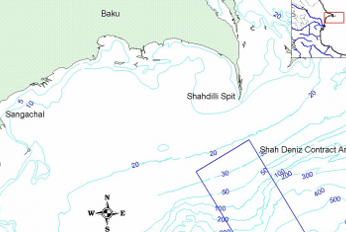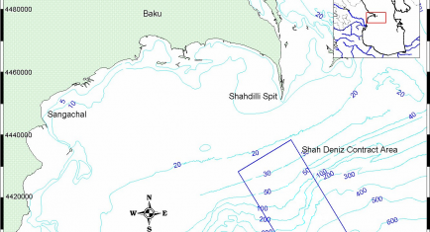Documents
This section features public documents and files uploaded by the stakeholders and custodians of the Caspian Sea environment.
 Post Drill Environmental Survey August 2010 AmC Project 10804Tue, 17/04/2018 - 13:32Technical Summary Sampling was conducted from the vessel Svetlomor 2 by personnel from AmC, the Ministry of Ecology and Natural Resources (MENR) and SOCAR. Sediment samples for physical and chemical analysis consisted of 2 replicates, while 3 replicates were taken for biological analyses. Analyses were carried out at AmC Ca+5
Post Drill Environmental Survey August 2010 AmC Project 10804Tue, 17/04/2018 - 13:32Technical Summary Sampling was conducted from the vessel Svetlomor 2 by personnel from AmC, the Ministry of Ecology and Natural Resources (MENR) and SOCAR. Sediment samples for physical and chemical analysis consisted of 2 replicates, while 3 replicates were taken for biological analyses. Analyses were carried out at AmC Ca+5
- Description
Technical Summary
Sampling was conducted from the vessel Svetlomor 2 by personnel from AmC, the Ministry of Ecology and Natural Resources (MENR) and SOCAR. Sediment samples for physical and chemical analysis consisted of 2 replicates, while 3 replicates were taken for biological analyses. Analyses were carried out at AmC Caspian Environmental Laboratory.
In general the survey stations around the SDX-5 well site were found to have well sorted very fine silt sediments with low variation in metal and hydrocarbon concentrations.
Relationships were found to be present between metals Cr, Cu, Fe, Mn, Pb and Zn. With the exception of phenols all hydrocarbon parameters were interrelated, with the proportions of UCM and NPD indicating that all hydrocarbons present were weathered.
The macrobenthic community had a low abundance and species richness and was characteristic of the area and depth. Overall no relationship was found to exist between any of the measured variables and the community structure, with the low species richness and abundance likely being due to the depth of the survey area exceeding 500m.
Comparison to previous baseline data indicated change at one station adjacent to the well location. Samples from this station indicated the presence of WBM contaminated drill cuttings, with coarser grained sediments, very high concentrations of Ba and the absence of the metal relationships evident at all other stations.
Hydrocarbon analysis of samples from this position revealed an LAO signature indicating the presence of SBM in addition to the WBM. These samples also had a high proportion of NPD which suggests the likely presence of cuttings contaminated with LAO and also reservoir fluids.
LAO was detected in one other sample and two stations had slightly elevated concentrations of Ba.
- Attached documents
- Metadata
- Year
- 2011
Document

